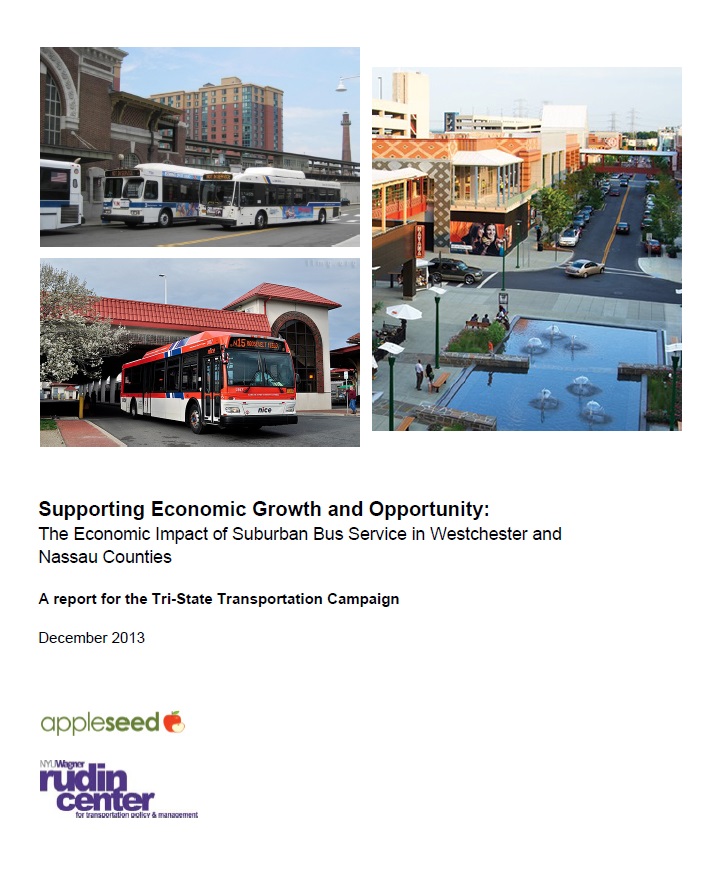A first-of-its-kind report commissioned by Tri-State Transportation Campaign and conducted by Appleseed, Inc. and New York University’s Rudin Center for Transportation Policy and Management, found that investment in Westchester County’s Bee Line and the Nassau Inter-County Express (NICE) served as boons for each county’s economy in 2012.
The report, “Supporting Economic Growth and Opportunity: The Economic Impact of Suburban Bus Service in Westchester and Nassau Counties,” found that in 2012 alone, the Bee Line and NICE systems added a total of $208 million and $191.5 million, respectively, to each county’s economy.
The totals were derived from both direct and indirect economic impacts, measuring the systems as enterprises themselves, as well as the multiplier effects generated as a result of money spent locally by employees on things like food, housing and utilities. These effects added almost half a billion dollars in economic development to the regional economy and supported 2,750 jobs (1,260 in Westchester and 1,490 in Nassau).
The report also highlighted that both bus systems serve as key economic lifelines for the riders who use them. Over 80,000 people a day use the Bee Line and NICE systems to get to work, earning an aggregate annual income of $1 billion in Westchester County and $840 million in Nassau County.
While both bus systems proved to be economic drivers for both counties, the report found that Westchester County has been especially adept at using transit as a tool to support key economic development projects. For example, the report highlights how Bee Line helped support the Ridge Hill development project, a $700 million, 81-acre mixed use development in the City of Yonkers that opened in 2011. According to the report, “Since Ridge Hill opened, the Bee Line has expanded bus service to the site. Between, 2011 and 2012, total annual ridership on the principal route serving Ridge Hill more than doubled, to more than 301,000.”
Nassau County, on the other hand, has yet to embrace NICE bus as an economic development tool, though the report adds that “service standards published by NICE in 2013 highlight the potential for extension of bus service to support major job-generating projects,” and there is a significant opportunity to utilize bus service to support the redevelopment of the Nassau Veterans Memorial Coliseum site.

Nassau buses have come a long way since I rode them in the 1990’s to get to Nassau Community College from Seaford.
What would be a 15-minute car ride, took me at least 80 minutes each way on the bus, because I had to take LIRR 1-2 stops and then TRANSFER. The transfer time killed me because the schedules were never synched, and with buses only running once an hour, I’d need to leave well in advance to avoid missing that one hourly bus.
NICE and Veolia are making strides to add buses on major routes, and to reduce transfer times at major transfer points like LIRR stations. It’s not enough to get me out of my car (sorry, just being honest) but it’s a change in the right direction.
[…] The State Senate Majority Coalition’s proposal is exceedingly poor public policy, not simply because it doesn’t actually do anything to bolster New York’s economy, but also because it could compromise public health and safety. If Coalition members really want to to create jobs and support economic growth, they might consider pushing for greater investment in public transportation. […]